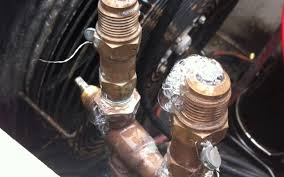
How leak detection refrigerant works during ac repair services
Finding a refrigerant leak in your HVAC system requires careful inspection and the use of specialized tools. Here are the general steps to find a refrigerant leak:
-
Visual inspection: Conduct a visual inspection of your HVAC system, looking for any signs of oil stains, residue, or greasy spots around the refrigerant lines, connections, and components. These can indicate a potential leak.
-
Use a leak detection tool: To detect smaller leaks that may not be visible, you can use a refrigerant leak detection tool. One common type is an electronic leak detector, which senses refrigerant gases in the air. Follow the manufacturer's instructions for proper usage.
-
Check joints and connections: Inspect the joints and connections in the refrigerant lines, valves, and fittings. Apply a soapy water solution to these areas and observe for any bubbles forming, indicating a leak.
-
Inspect the evaporator and condenser coils: Leaks can sometimes occur in the evaporator or condenser coils. Carefully examine these coils for signs of corrosion, damage, or oil residue.
-
Check service ports: Inspect the service ports on the HVAC system, including the high and low-pressure ports. Ensure the caps are tightly sealed and not damaged.
-
Perform a dye test: In some cases, a UV dye can be added to the refrigerant system. This dye will circulate with the refrigerant and can be detected using a UV light. This method helps pinpoint the exact location of the leak.
If you are unsure about conducting the leak detection process yourself or if you are unable to locate the leak, it is advisable to contact AC Plus Heating & Air. Our professional HVAC technicians have the expertise, experience, and equipment to accurately detect and repair refrigerant leaks. Call AC Plus Heating & Air today for reliable and efficient leak detection services, ensuring the optimal performance and efficiency of your HVAC system.